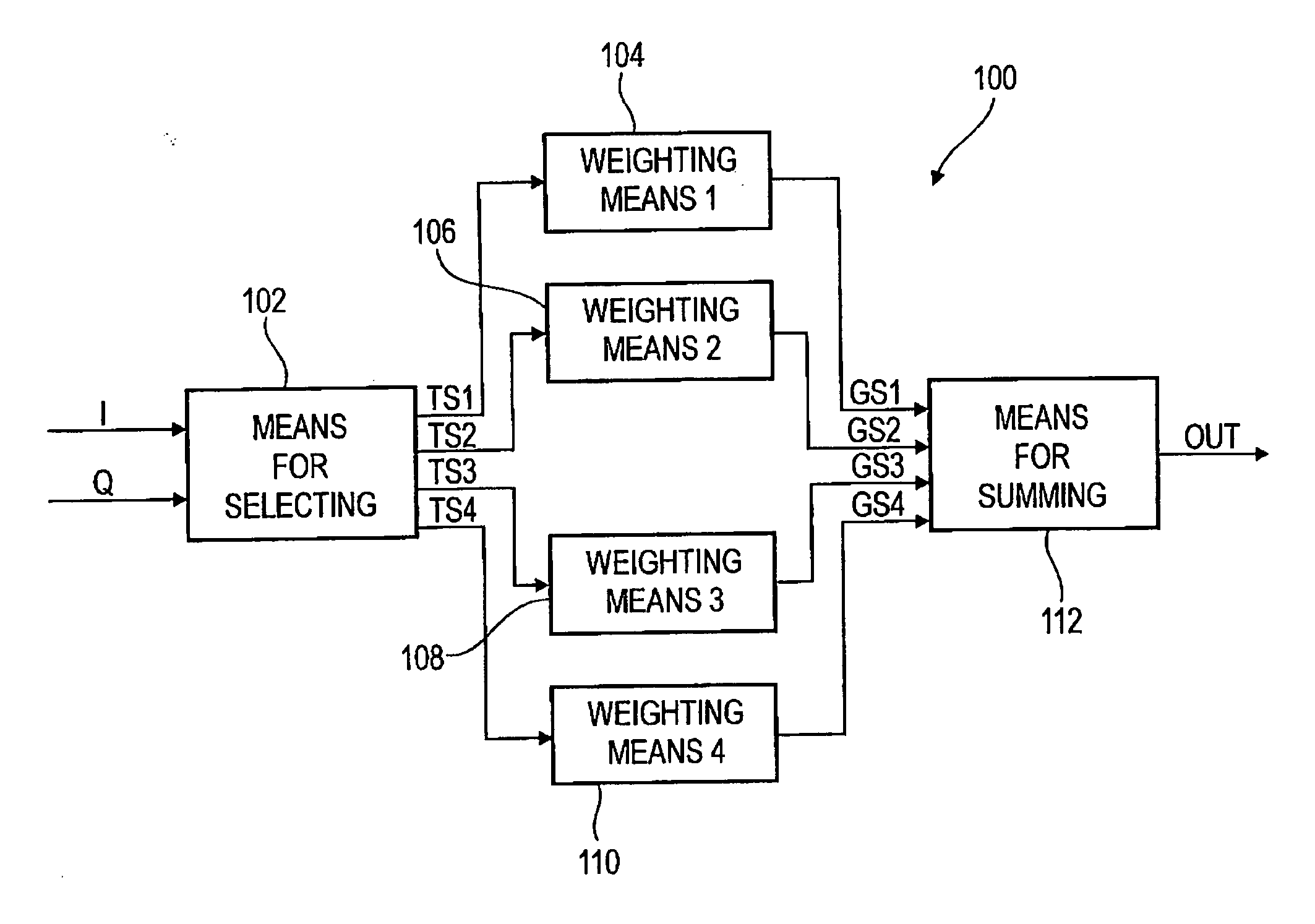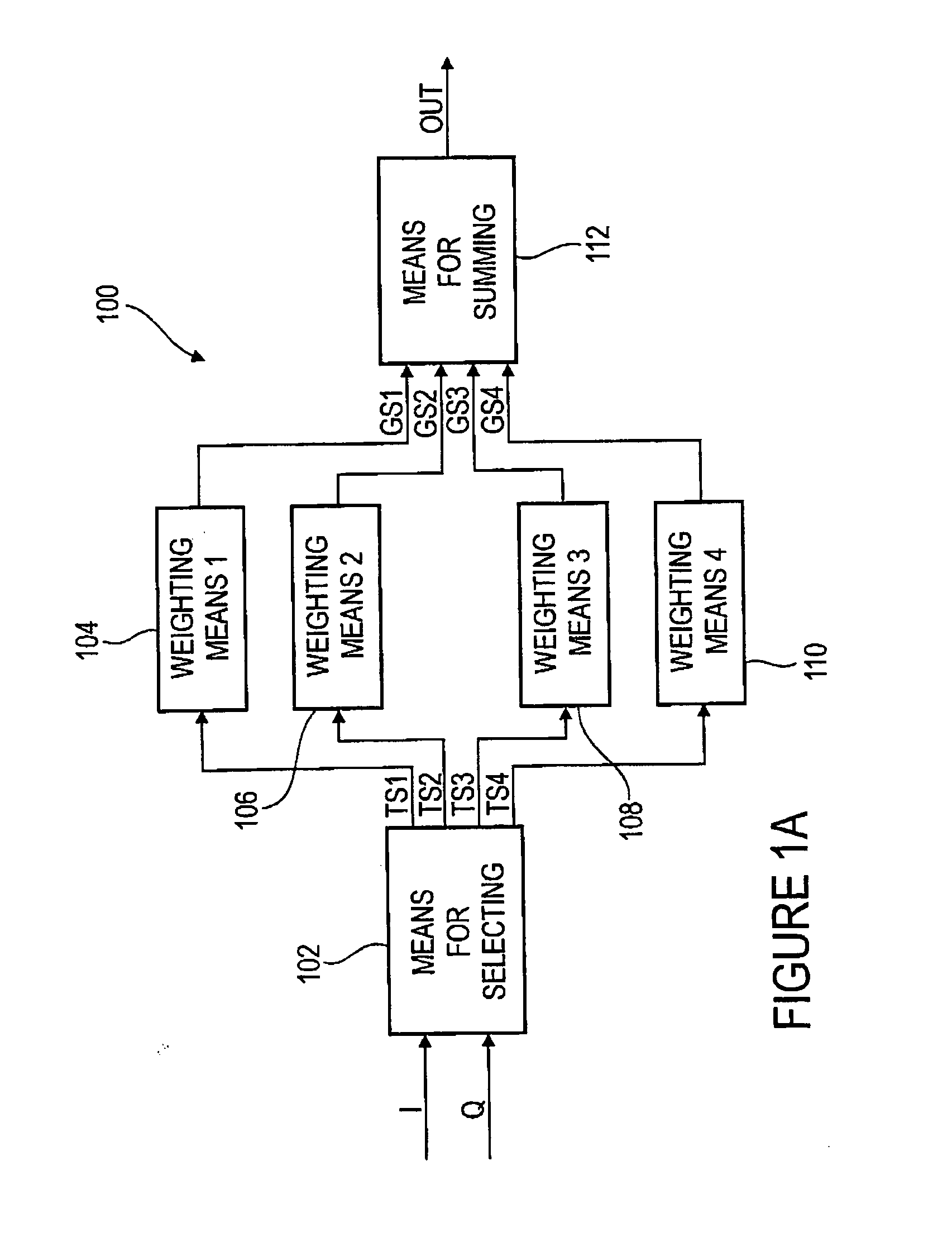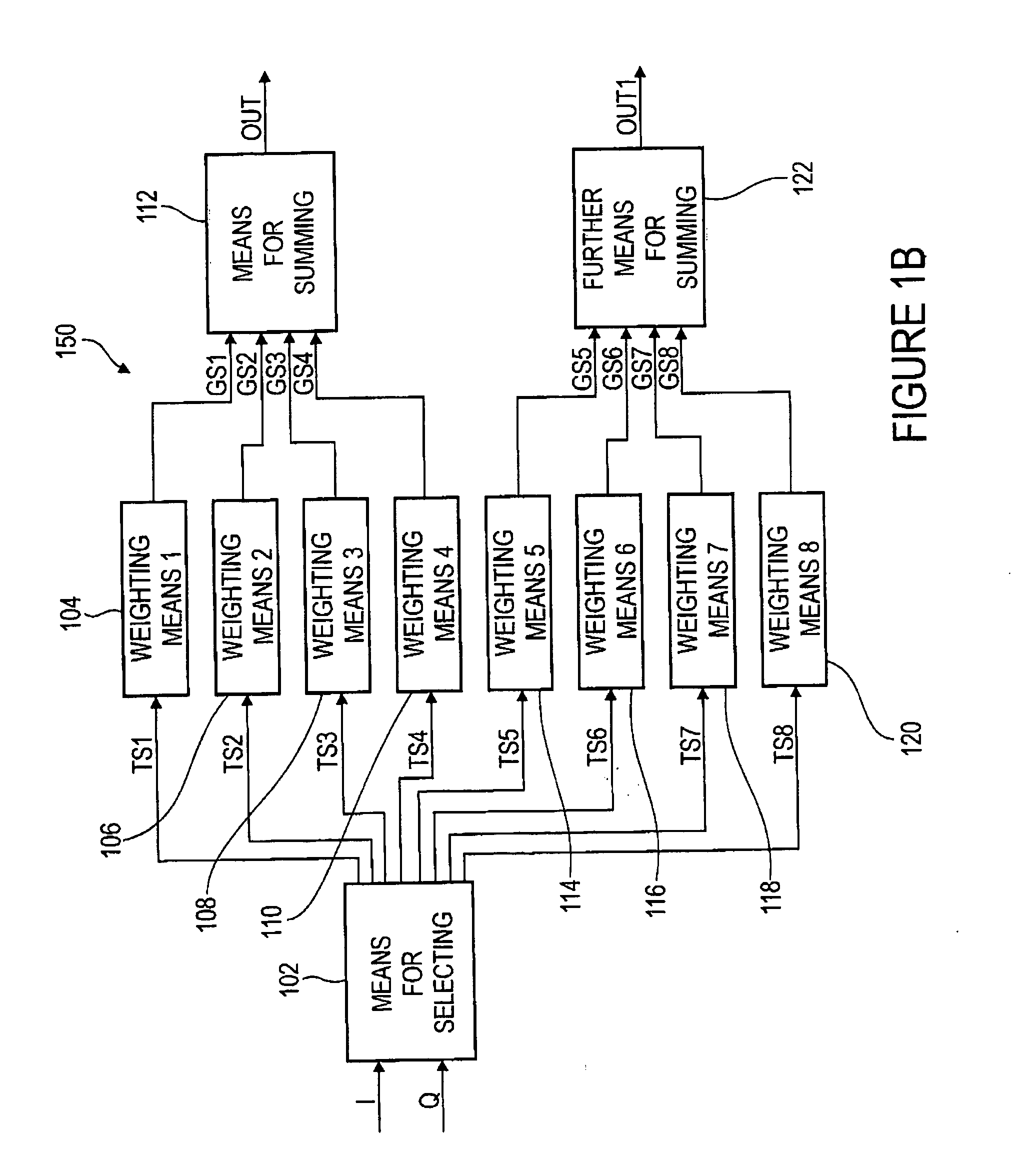[0018] It is thus an
advantage of the present invention that already in means for selecting a split-up of the signal into several sub-signals is performed, wherein preferably the signal is split up into a number of sub-signals corresponding to a downsampling factor. By this, already the basis for a downsampling to be performed using the downsampling factor is provided. Further, means for weighting, for example weighting each of the sub-signals, may be implemented such that it performs a low-pass filtering. The filtering may then be performed in the form of a polyphase filtering with the individual sub-signals as polyphase signals. The
advantage of such a low-pass polyphase filtering is that several signal values do not have to be multiplied one after the other by several filter coefficients and be subsequently summed, but that rather by splitting up into individual polyphase signals (i.e. sub-signals) a parallelization of the
processing is possible. This further results in a lower
work cycle frequency of the frequency converter than would be required in a conventional, serial FIR low-pass filtering. A reduction of the
clock frequency further results in an increase of the efficiency with regard to numerics or circuit engineering, whereby a cost reduction and (due to the lower
clock frequency) also a lower
power consumption of the proposed frequency converter with regard to the conventional frequency converter may be realized. Finally, in means for summing a merging of the individual weighting signals takes place, for example corresponding to the low-pass-filtered polyphase signals (i.e. the low-pass-filtered sub-signals). Such a summation thus corresponds to the summation of individual weighted samples, as it takes place according to the known (serial) FIR filter regulation.
[0019] Further, already in means for selecting, by a suitable selection of I component values or Q component values for the sub-signals, already first steps for the rearrangement of real and imaginary part values of the signal values required from the known mixing method may be performed. If now additionally a
negation of corresponding real or imaginary part values, i.e. a
negation of values of a sub-signal with regard to the I or Q component values is performed, thus simultaneously the above-described mixer with the
frequency conversion of one quarter of the sampling frequency may be realized efficiently. In means for selecting or in means for weighting, still again a
negation of real or imaginary part values of the signal may be performed. This means that already by means for selecting (and partially by means for weighting) the mixer function may be formed.
[0020] According to an embodiment of the present invention, means for selecting may be implemented to provide a first, second and fourth auxiliary signal. Here, further, means for weighting may be implemented to weight the first auxiliary signal with one or several weighting coefficients to obtain a fifth weighting signal, to weight the second auxiliary signal with one or several weighting coefficients to obtain a sixth weighting signal, to weight the third auxiliary signal with one or several weighting coefficients to obtain a seventh weighting signal and to weight the fourth auxiliary signal with one or several weighting coefficients to obtain an eighth weighting signal. Preferably, the fifth, sixth, seventh and eighth weighting signal are added in further means for summing, to obtain a further end signal. Preferably, means for selecting may also be implemented to calculate the further end signal based on the first, second, third and fourth auxiliary signal such that it is a complementary signal to the end signal. To this end, means for selecting may in particular be implemented so that each of the first, second, third and fourth auxiliary signals corresponds to a complementary sub-signal of the first, second, third or fourth sub-signals.
[0021] Further, means for weighting may preferably be implemented to weight the first, second, third and fourth auxiliary signal in an analog way, like the first, second, third and fourth sub-signal, to obtain the fifth, sixth, seventh and eighth weighting signal. By adding the fifth, sixth, seventh and eighth weighting signal of means for weighting, thus the further end signal may be provided corresponding to a complementary signal to the end signal by a suitable selection of I or Q component values in means for selecting.
[0022] Such an approach comprising the calculation of the further end signal offers the
advantage that already in a parallel calculation of the end signal and the further end signal (complementary signal) a clear acceleration of the determination of a signal rendered for a further
processing is possible, wherein the signal rendered for the further processing comprises a component corresponding to the end signal and a component corresponding to the complementary signal. In this case, by a corresponding implementation of means for selecting, further means for weighting and further means for summing, a comparatively low additional overhead as compared to conventional frequency
converters is necessary.
 Login to View More
Login to View More  Login to View More
Login to View More 


